Here is a sample of abstracts from the clinical research conducted at the NIH Clinical Center and published in a peer reviewed medical journal in 2020. Links to the full text and video formats are provided if available.

Prisons and Pandemics
Published in: San Diego Law Review (December 2020)
The COVID-19 pandemic has ravaged U.S. prisons and jails, leading to heated debates about early release of prisoners. This article discusses how to balance protection of public health, public safety, and incarcerated individuals’ legal rights during a pandemic.
Read the article.

Real-World Inpatient Use of Medications Repurposed for COVID-19 in U.S. Hospitals, March-May 2020
Published in: Open Forum Infectious Diseases (December 2020)
In times of medical emergencies, medical care may be greatly influenced by suboptimal evidence, mass media, and experiences from similar and non-scientific clinical scenarios coupled with the need to “do something”, especially for severely ill patients.
Read the article.

Pooled Saliva Specimens for SARS-CoV-2 Testing
Published in: Journal of Clinical Microbiology (December 2020)
Saliva testing can detect individuals with higher viral loads and more likely infectious. In asymptomatic screening, it does not require swabs or viral transport media for collection, and may help improve voluntary screening compliance for those averse to nasal collections.
Read the article.
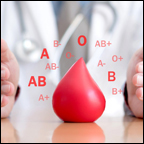
COVID-19: Risk of Infection Is High, Independently of ABO Blood Group
Published in: Haematologica (December 2020)
The risk of acquiring a SARS-CoV-2 infection is exceptionally high among young adults exposed to the virus in certain circumstances and no ABO blood group type can protect an individual from becoming infected.
Read the article.
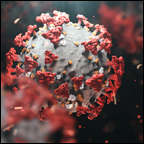
N-Glycan Modification in Covid-19 Pathophysiology: In vitro Structural Changes with Limited Functional Effects
Published in: Journal of Clinical Immunology (November 2020)
Despite clear N-glycan alteration in the presence of miglustat, an FDA-approved α-glucosidase inhibitor, the function of the Covid-19-related glycoproteins studied was not affected, making it unlikely that miglustat can change the natural course of the disease.
Read the article.

Exercise Intervention Leads to Functional Improvement in a Patient with Spinal and Bulbar Muscular Atrophy
Published in: Journal of Rehabilitation Medicine (November 2020)
A patient with the progressive neuromuscular disease of spinal and bulbar muscular atrophy experiences improvement in multiple clinical measures of strength and function after adhering to a minimally supervised home-based exercise program.
Read the article.

In Utero SARS-CoV-2 Infection
Published in: Journal of the Pediatric Infectious Diseases Society (October 2020)
A premature child born with viral RNA in the cord blood, urine and nasopharynx provides evidence of in utero transmission of SARS-CoV-2 and provides insight into bloodstream spread from mother to fetus.
Read the article.

Cooking Frequency and Perception of Diet among US Adults Are Associated with US Healthy and Healthy Mediterranean-Style Dietary Related Classes: A Latent Class Profile Analysis
Published in: Nutrients (October 2020)
Cooking frequency, as a dietary behavior, may be a potential area of focus for dietary quality promotion efforts directed at helping Americans adhere to recommended dietary guidelines.
Read the article.
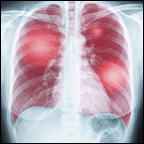
How Low Should We Go? Potential Benefits and Ramifications of the Pulmonary Hypertension Hemodynamic Definitions Proposed by the 6th World Symposium
Published in: Current Opinion in Pulmonary Medicine (September 2020)
Review of the historical context of the hemodynamic criteria that define pulmonary hypertension as well as the literature supporting the proposal by the 6th World Symposium on Pulmonary Hypertension to lower the threshold of mean pulmonary artery pressure.
Read the article.

So Much at Stake: Ethical Tradeoffs in Accelerating SARSCoV-2 Vaccine Development
Published in: Vaccine (September 2020)
Accelerated randomized controlled trials are the best approach to accelerating vaccine development in a pandemic, and more likely than other approaches to enhance social value without compromising ethics or science.
Watch the video. Read the article.

Dacron Swab and PBS Are Acceptable Alternatives to Flocked Swab and Viral Transport Media for SARS-CoV-2
Published in: Diagnostic Microbiology and Infectious Diseases (September 2020)
Nasopharyngeal flocked swabs in viral transport media are recommended for respiratory virus testing; supplies have become limiting during the coronavirus pandemic. We show that widely available Dacron polyester swabs and phosphate-buffered-saline are an acceptable alternative for SARS-COV-2 and RSV testing.
Read the article.

Artificial Intelligence for the Detection of COVID-19 Pneumonia on Chest CT Using Multinational Datasets
Published in: Nature Communications (August 2020)
A deep learning-based artificial intelligence system can assess computed tomography scans to identify COVID-19 associated pneumonia and distinguish non-COVID related pneumonias with high specificity in diverse patient populations.
Read the article.

Is This Person with Dementia (Currently) Competent to Request Euthanasia? A Complicated and Underexplored Question
Published in: Journal of Medical Ethics (August 2020)
Ethical challenges and implications are explored of determining if a person in a mild to moderately severe stage of dementia, who does not have a written advance euthanasia directive, has the capacity to request euthanasia and/or assisted suicide.
Read the article.

Effect of a Brief Mindfulness-Based Program on Stress in Health Care Professionals at a US Biomedical Research Hospital
Published in: JAMA Network Open (August 2020)
A brief course of mindfulness training during work hours was feasible and effective in reducing stress among a mixed group of health care professionals. The training was also effective in reducing anxiety and improving positive affect, state mindfulness, and self-care.
Watch the video. Read the article.

Time Course and Diagnostic Utility of NfL, tau, GFAp, and UCH-L1 in Subacute and Chronic TBI
Published in: Neurology (July 2020)
Neurofilament light chain delivered superior diagnostic and prognostic performance as a blood biomarker for mild, moderate, and severe traumatic brain injury when compared to blood proteins glial fibrillary acidic protein, tau, and ubiquitin c-terminal hydrolase-L1.
Read the article.
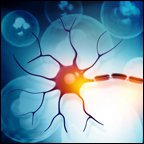
Neurofilament Light as a Biomarker in Traumatic Brain Injury
Published in: Neurology (July 2020)
Neurofilament light chain as a blood biomarker can detect brain injury and predict recovery in multiple groups, including professional hockey players with acute or chronic concussions and clinic-based patients with mild, moderate, or severe traumatic brain injury.
Read the article.

Advantages of Using Lotteries to Select Participants for High‐Demand Covid‐19 Treatment Trials
Published in: Ethics and Human Research (June 2020)
With few treatments available for Covid-19, clinical trials may be attractive for patients but unable to accommodate everyone who wants to enroll. In high-demand trials, a weighted lottery can select participants fairly and efficiently while enhancing the knowledge gained.
Read the article.

Smartphone Augmented Reality CT-Based Platform for Needle Insertion Guidance: A Phantom Study
Published in: CardioVascular and Interventional Radiology (May 2020)
A smartphone application was used to superimpose computer generated images onto patients to test for improvements in needle placement for biopsy or ablation. The video-game-like augmented reality improved accuracy in a variety of phantoms.
Read the article.

Targeted Early Chest CT in COVID-19 Outbreaks as Diagnostic Tool for Containment of the Pandemic - A Multinational Opinion
Published in: Diagnostic and Interventional Radiology (April 2020)
Researchers provide a four-nation opinion on the early use of chest CT scans as a testing tool for focal outbreaks to facilitate containment of COVID-19 and also introduce a new patient isolation bag to reduce CT contamination.
Read the article.
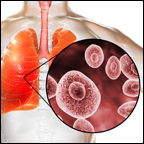
Diversity and Complexity of the Large Surface Protein Family in the Compacted Genomes of Multiple Pneumocystis Species
Published in: MBio (March 2020)
An in-depth analysis on the large surface glycoprotein superfamily in the genomes of Pneumocystis species, a major cause of disease in humans with immunodeficiency, sheds new light on how this pathogen interacts with and survives in the host.
Read the article.

Automated CT Biomarkers for Opportunistic Prediction of Future Cardiovascular Events and Mortality in an Asymptomatic Screening Population
Published in: The Lancet Digital Health (March 2020)
Computerized x-ray imaging often contains unused biometric data that artificial intelligence can access and analyze to predict major cardiovascular events including heart attack, stroke, and death and overall survival with higher accuracy than routine clinical examinations.
Read the article.

A Machine Learning Algorithm to Estimate Sarcopenia on Abdominal CT
Published in: Academic Radiology (March 2020)
A prototype of a fully-automated deep learning system to detect central sarcopenia using computed tomography scans was successfully created and validated.
Read the article.

COVID-19: Growing Health Disparity Gaps and an Opportunity for Health Behavior Discovery?
Published in: Health Equity (February 2020)
Identifying the role of COVID-19 on health behaviors could be key to understanding the pandemic’s impact on populations affected by health disparities, such as African Americans.
Read the article.
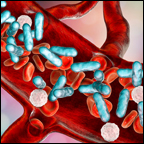
Checkpoint Inhibitor Therapy in Preclinical Sepsis Models: a Systematic Review and Meta-Analysis
Published in: Intensive Care Medicine Experimental (February 2020)
AA meta-analysis of 11 animal studies suggest that additional preclinical studies are needed to show the benefit that checkpoint inhibitors add to antibiotic therapy for common bacterial infections causing sepsis.
Read the article.

Spirituality Among Family Caregivers of Cancer Patients: The Spiritual Perspective Scale
Published in: Research in Nursing & Health (January 2020)
This study indicates that the Spiritual Perspective Scale is a viable tool to assess differences in spirituality among informal caregivers of cancer patients.
Read the article.

Sleep Regularity Index in Patients with Alcohol Dependence: Daytime Napping and Mood Disorders as Correlates of Interest
Published in: International Journal of Environmental Research and Public Health (January 2020)
The Sleep Regularity Index was calculated among patients with alcohol use disorder undergoing inpatient treatment and showed associations between the index, the presence of one or more mood disorders, and nap durations.
Watch the video. Read the article.

Chronic Mirabegron Treatment Increases Human Brown Fat, HDL Cholesterol, and Insulin Sensitivity
Published in: Journal of Clinical Investigation (January 2020)
A small study of healthy women treated for four weeks with a beta 3 adrenergic receptor agonist showed increases in metabolic activity of brown fat, HDL-cholesterol, insulin sensitivity, and bile acids, which help digest fats and regulate cholesterol.
Read the article.

Ebola Virus in the Democratic Republic of the Congo: Advances and Remaining Obstacles in Epidemic Control, Clinical Care, and Biomedical Research
Published in: Chest (January 2020)
The Ebola virus disease epidemic in the Congo remains uncontrolled with a high fatality rate despite advances in vaccine availability and use, improved clinical care within Ebola treatment units, and implementation of a research clinical trial evaluating targeted therapies.
Read the article.
Read more articles about research in the NIH Clinical Center in 2020.
